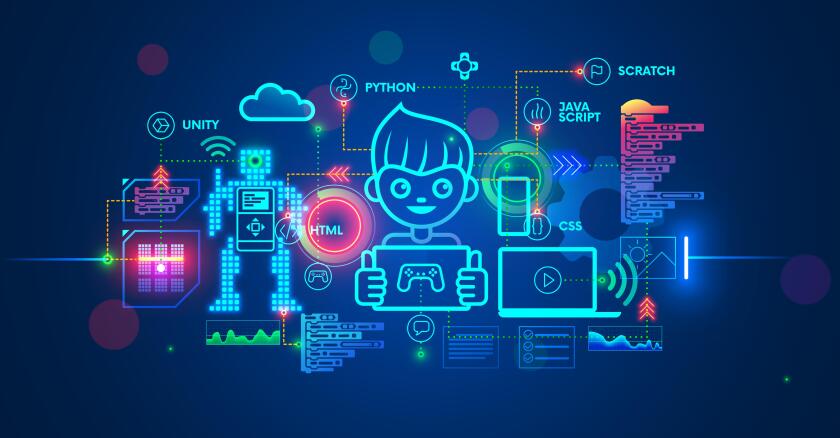Comprehensive Service Guides for Advancing Modern Technology Education And Learning in Schools and Colleges
The assimilation of innovation education and learning right into school and college educational program has ended up being an essential important in preparing students for a significantly electronic workforce. What particular methods can be embraced to maximize their impact on both pupils and instructors?
Importance of Innovation Education And Learning
As modern technology remains to evolve at an unmatched speed, the relevance of technology education and learning has come to be increasingly obvious in today's society. The combination of technology right into numerous elements of life demands that people possess a fundamental understanding of technical principles and applications. This expertise not just enhances employability yet likewise promotes crucial thinking and analytical abilities important for navigating a vibrant labor force.
In schools, technology education and learning furnishes students with the ability to adjust to fast modifications in industries driven by advancement. It motivates imagination and empowers learners to involve with arising modern technologies, from expert system to information analytics. Modern technology education advertises digital literacy, which is essential in a period where info is conveniently available yet usually misleading.

Trick Elements of Effective Guides
Efficient overviews for modern technology education and learning need to encompass several essential parts to ensure that students obtain one of the most from their experiences. First, a distinct educational program is important, detailing the goals, learning end results, and the skills to be developed. This curriculum needs to be routinely upgraded to show the quickly developing technical landscape, making certain significance and applicability.
Second, detailed sources that consist of books, on the internet materials, and hands-on devices are vital. These sources need to be diverse and easily accessible, dealing with numerous finding out choices and designs. Additionally, integrating real-world scenarios and study can boost understanding and engagement.
Third, analysis techniques must be included to review learner development successfully. These assessments should be differed, incorporating cumulative and developmental analyses that line up with the learning goals.
Furthermore, professional growth chances for instructors are important. Training programs and workshops can equip teachers with the current technological innovations and pedagogical strategies.
Finally, promoting a collaborative knowing setting encourages peer interaction and expertise sharing. By including these essential elements, overviews for technology education and learning can dramatically enhance the discovering experience, preparing pupils for future challenges in a progressively electronic globe.
Building Market Collaborations
Building strong sector partnerships is a vital element of improving modern technology education. These collaborations in between universities and organizations produce a dynamic environment that profits employers, instructors, and trainees alike. By fostering partnerships with market institutions, leaders and colleges can align their curricula with the evolving demands of the work market, guaranteeing that students acquire relevant abilities and expertise.
The growth of teaching fellowships, instructions, and mentorship programs works as a foundation of these partnerships. Such chances supply trainees with hands-on experience, improving their employability and functional understanding of innovation applications. Furthermore, industry partners can offer understandings right into arising patterns and technological improvements, enabling instructors to adjust their mentor techniques accordingly.
Furthermore, partnerships can facilitate accessibility to sources, such as tools, software application, and financing for study jobs. These payments enhance the learning atmosphere and enable establishments to stay at the center of technological innovation. Eventually, building durable industry partnerships is important for growing a proficient workforce that fulfills the needs these days's rapidly transforming technological landscape, while additionally driving economic development and competitiveness in the broader area.
Implementing Innovation Programs
Implementing innovation programs within schools requires a critical technique that prioritizes both educational program advancement and resource allotment. To launch successful innovation assimilation, institutions should initially evaluate their existing facilities and recognize voids in resources, including hardware, software application, and employees training. This assessment enables colleges and universities to create a tailored plan that lines up with their certain instructional objectives.
Following, it is vital to establish a detailed educational program that includes arising technologies and industry requirements. Teaming up with educators, market professionals, and stakeholders can make certain that the curriculum stays reliable and pertinent in preparing pupils for the labor force (Insurance). In addition, specialist growth for professors is vital, as it outfits instructors with the skills needed to efficiently instruct new modern technologies
In addition, establishments must highlight the significance of hands-on learning experiences, such as laboratories and workshops, that enable students to use theoretical knowledge in practical setups. This experiential technique enhances engagement and cultivates essential reasoning. Safeguarding sustainable funding via collaborations and grants can aid expand and keep modern technology programs, guaranteeing long-lasting success and adaptability in an ever-evolving technological landscape.
Determining Success and Outcomes
Examining the success and outcomes of innovation education programs is essential for verifying their influence and assisting future enhancements. Reliable measurement structures should include both measurable and qualitative metrics, supplying a comprehensive view of program effectiveness. Trick performance signs (KPIs) such as pupil enrollment numbers, retention prices, and program conclusion percentages supply important measurable data.

Integrating standardized evaluations can better examine trainees' technological expertises and preparedness for the labor force. Benchmarking versus similar establishments permits contextually appropriate comparisons, highlighting areas for growth.
Ultimately, the continual examination of technology education programs cultivates a culture of enhancement, ensuring that they progress in placement with industry demands and instructional standards. By systematically gauging success, establishments can not only demonstrate accountability to stakeholders however Insurance likewise improve their offerings, therefore improving the finding out experience and preparing trainees for the ever-changing technical landscape.
Conclusion

The integration of innovation education and learning right into school and university educational program has actually become an essential necessary in preparing trainees for a significantly digital workforce.As innovation continues to progress at an unprecedented pace, the significance of innovation education has ended up being significantly noticeable in today's culture.In educational institutions, technology education equips students with the ability to adapt to rapid changes in industries driven by development. By prioritizing innovation education, institutions can cultivate a generation of informed residents capable of leveraging innovation for personal and societal advancement. The implementation of durable evaluation techniques allows institutions to measure success and outcomes, inevitably improving the general effectiveness of modern technology education initiatives and preparing pupils for future obstacles.